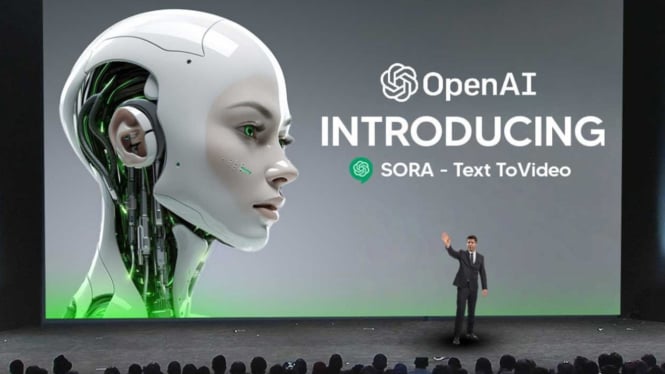Unveiling SoraAI: OpenAI's Breakthrough in Text-to-Video Generation
In a significant leap forward in the realm of artificial intelligence, OpenAI has introduced its latest generative model – SoraAI. Positioned as a text-to-video generator, SoraAI showcases the prowess of cutting-edge AI technology. The unveiling of SoraAI marks a milestone, offering a glimpse into the future of video creation through the manipulation of textual prompts.
Understanding SoraAI's Capability
SoraAI, named after the Japanese word for "sky," exhibits a remarkable ability to transform text descriptions into photorealistic videos. Unlike its predecessors, SoraAI stands out for its capacity to generate videos up to 60 seconds long, employing either text instructions alone or in combination with images. The model's capabilities extend beyond mere animations, delving into the creation of lifelike scenarios.
Technical Insights into SoraAI
At its core, SoraAI is built upon OpenAI's preexisting technologies, incorporating elements from the image generator DALL-E and the GPT large language models. What sets SoraAI apart is its integration of two distinct AI approaches: a diffusion model and transformer architecture. The diffusion model, akin to those used in AI image generators like DALL-E, gradually transforms randomized image pixels into coherent visuals. This foundational approach ensures a seamless evolution from noise to a refined video output. Complementing this, the transformer architecture contextualizes and assembles sequential data, aligning with the process language models use to construct coherent sentences. OpenAI's dedication to realism is evident in its breakdown of video clips into "spacetime patches." SoraAI's transformer architecture processes these patches, resulting in videos that are an "order of magnitude more believable and less cartoonish" than its predecessors.
Real-World Applications
SoraAI's real-world applications are diverse, ranging from depicting everyday scenes to more fantastical scenarios. One compelling demonstration involves generating a video based on a text prompt describing "a stylish woman walking down a Tokyo street filled with warm glowing neon and animated city signage." The model successfully translates this prompt into a vivid, visually appealing video. Another example showcases a dog frolicking in the snow, while others depict vehicles navigating roads and even sharks swimming midair between city skyscrapers. These applications highlight SoraAI's versatility and potential to revolutionize video creation across various domains.
Challenges and Imperfections
While SoraAI undoubtedly pushes the boundaries of generative AI, it is not without its imperfections. Some generated videos exhibit glitches, such as a walking human's left and right legs swapping places, a chair floating in midair, or a bitten cookie magically regaining its pristine form. These anomalies suggest that, for now, deepfake videos produced by SoraAI may still be detectable, especially in complex scenes with significant movement.
Safety Measures and Public Release
Recognizing the potential for misuse, OpenAI has taken a cautious approach to releasing SoraAI to the public. The company has engaged in "red team" exercises, where experts attempt to break the model's safeguards to assess its vulnerability to misuse. The current testing phase involves domain experts focused on areas like misinformation, hateful content, and bias. OpenAI emphasizes the importance of safety steps, especially considering the widespread participation in elections. Automated processes are in place to prevent the generation of content depicting extreme violence, sexual content, hateful imagery, or real politicians and celebrities. The company is actively working on safety improvements and has yet to announce a public release for SoraAI.
Concerns and Criticisms
Despite the technological marvel that SoraAI represents, it has not escaped scrutiny and concerns from experts. Some raise questions about the potential for SoraAI-generated content to deceive and manipulate the general public. Rachel Tobac, a member of the technical advisory council of the US's Cybersecurity and Infrastructure Security Agency (CISA), highlights the need for a comprehensive discussion on the risks associated with this AI model. Additionally, concerns about copyright and privacy have surfaced, with critics questioning the transparency of the model's training data sources and the consent obtained from content creators. The lack of information on these aspects has led to skepticism in certain quarters.
Conclusion
In conclusion, OpenAI's SoraAI stands at the forefront of AI innovation, showcasing the possibilities and challenges associated with text-to-video generation. Its ability to create realistic videos from textual prompts opens up new avenues for content creation, storytelling, and immersive experiences. However, the ethical implications and potential risks associated with deepfake technology cannot be overlooked. As OpenAI continues to refine and secure SoraAI, the journey towards harnessing the full potential of generative AI in the visual domain unfolds. SoraAI is undeniably a captivating glimpse into the future of AI-driven content creation, raising both excitement and concerns about the transformative power it holds.


